Execute. Monitor. Update.
From anywhere and everywhere
IoT Catalyst Container provides Digital Things with the execution environment required for any Linux or Windows computation engine. A Container i.e. a containerized Digital Thing, is a clone of the original digital thing found in the library, that has been instantiated with specific settings and deployed to a remote IoT Catalyst Edge for execution.
IoT Catalyst Container adds a lot of out-of-the-box capabilities to the original code written by the user
dramatically reducing all the management effort.
A Container can be monitored, started, stopped, mounted, unmounted, logged, inspected, and even updated remotely without installing additional software or network utilities. All the management operations can be executed without a VPN or private APN!
"Containerized" Digital Things : this is how your Digital Twins take birth !
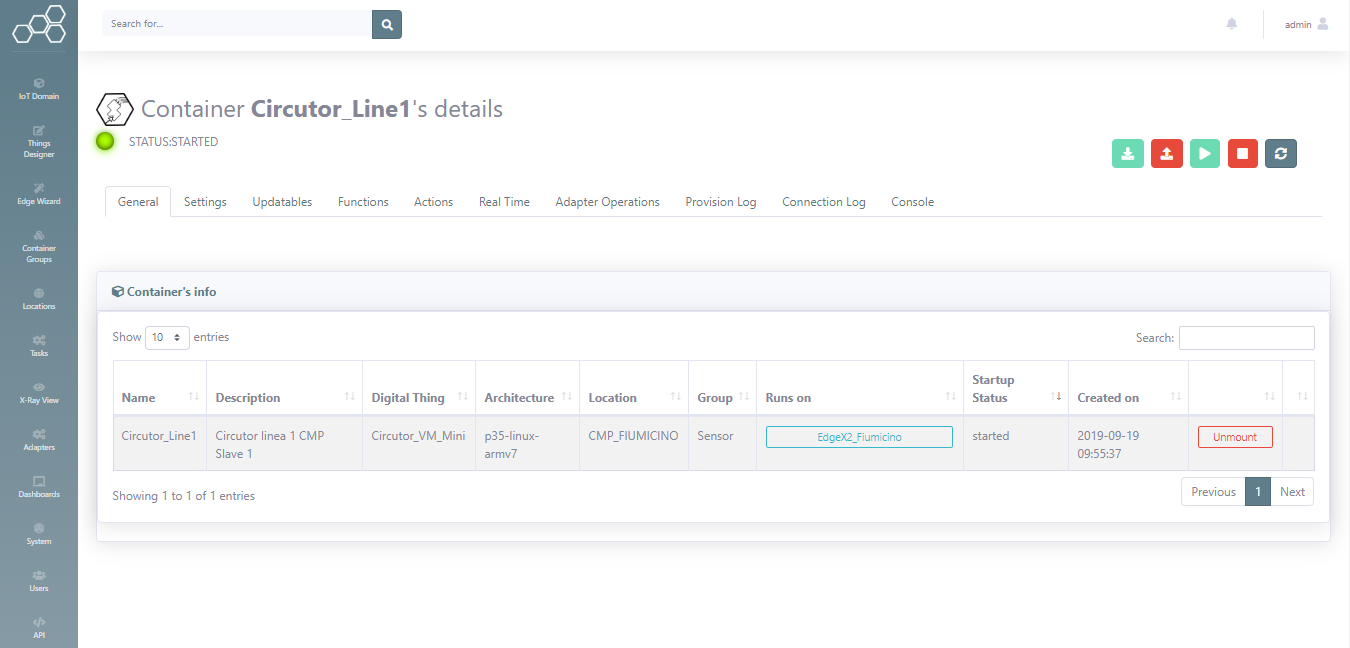
Management View
Thanks to the IoT Catalyst Studio it possible to have a single point of management of each IoT Catalyst Container. You can have a real time awareness of the status of each container (i.e. if it is running or not), start and stop it, or decide to unmount the Container for mounting on another IoT Catalyst Hypervisor. Everything happens real time, having instant notifications of the result of every performed action.
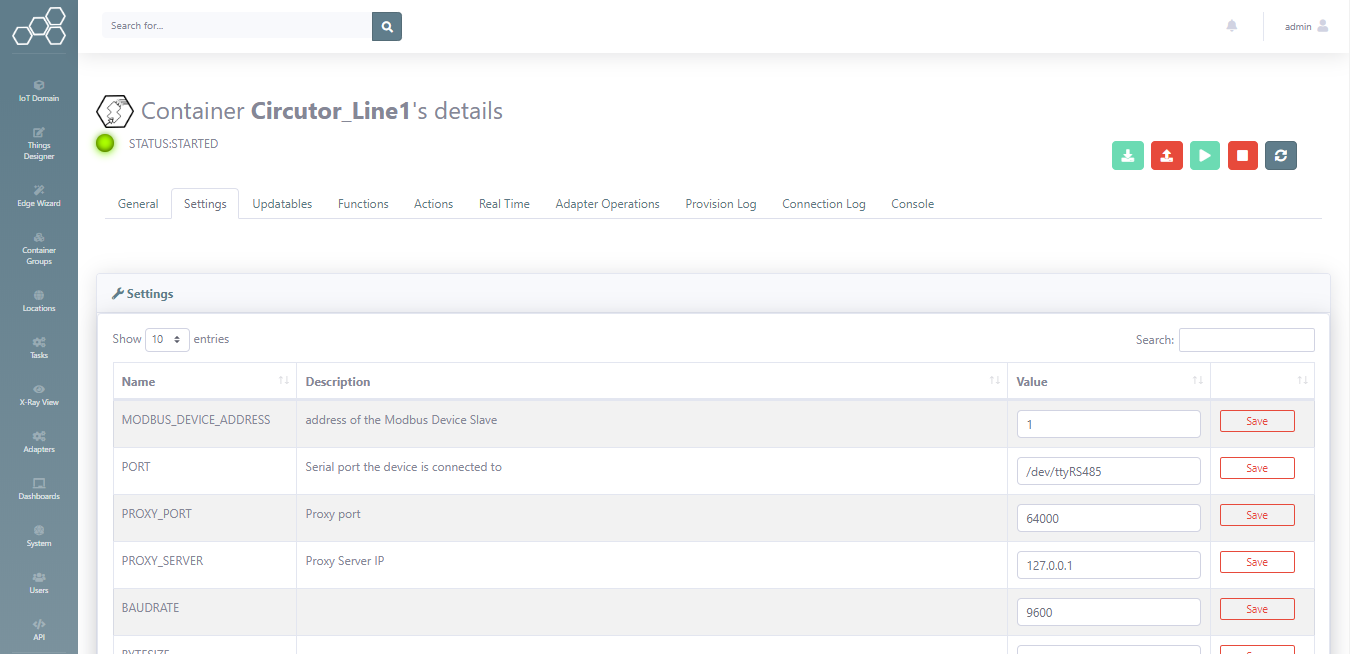
Runtime Settings
It's a common scenario that an IoT driver can require specific settings in order to work properly. For instance, if we imagine a device that needs to be interfaced via a serial port, it's clear that it is necessary to give the right settings, in order to instruct the Container about which specific port should connect to and all the other related settings required (baudrate, parity etc.). IoT Catalyst Studio offers the chance to edit and update the start-up settings of the Container whenever it is necessary.
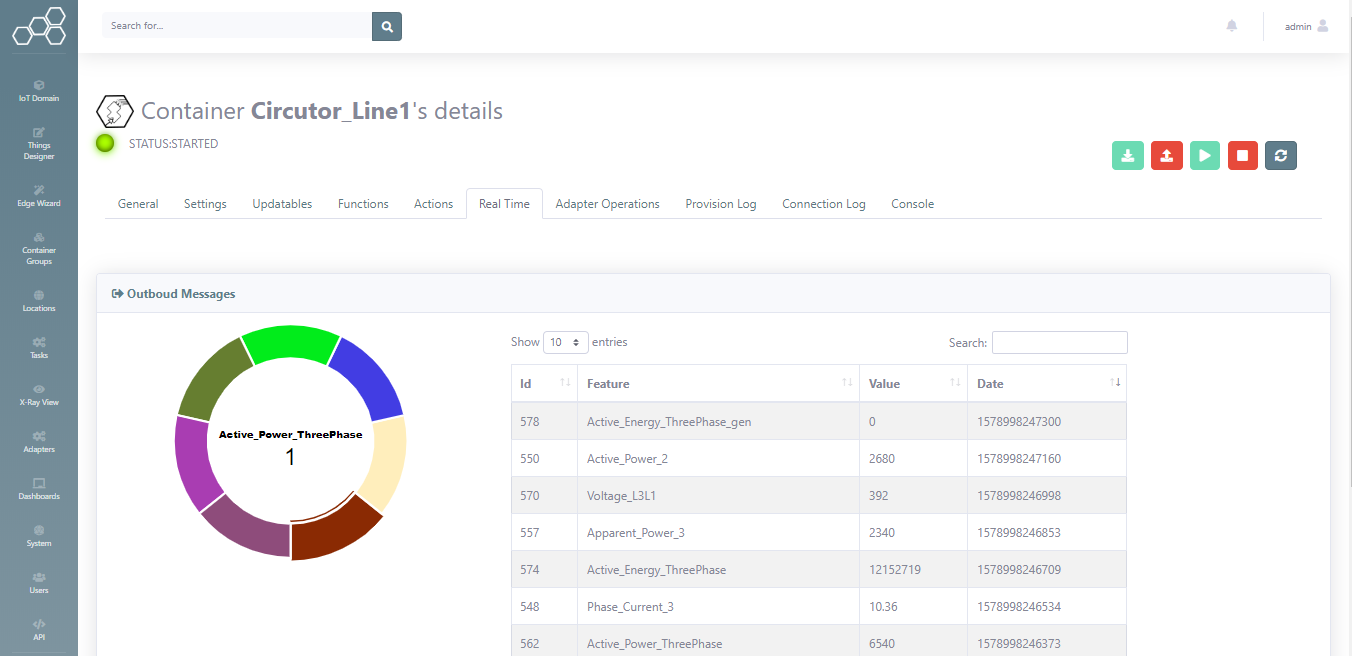
Realtime Insights
Every message sent or received by an IoT Catalyst Container is shown real time, reporting the id, the feature name, the actual value and the creation datetime. The same happens for the consoles of the associated IoT Catalyst Adapters.
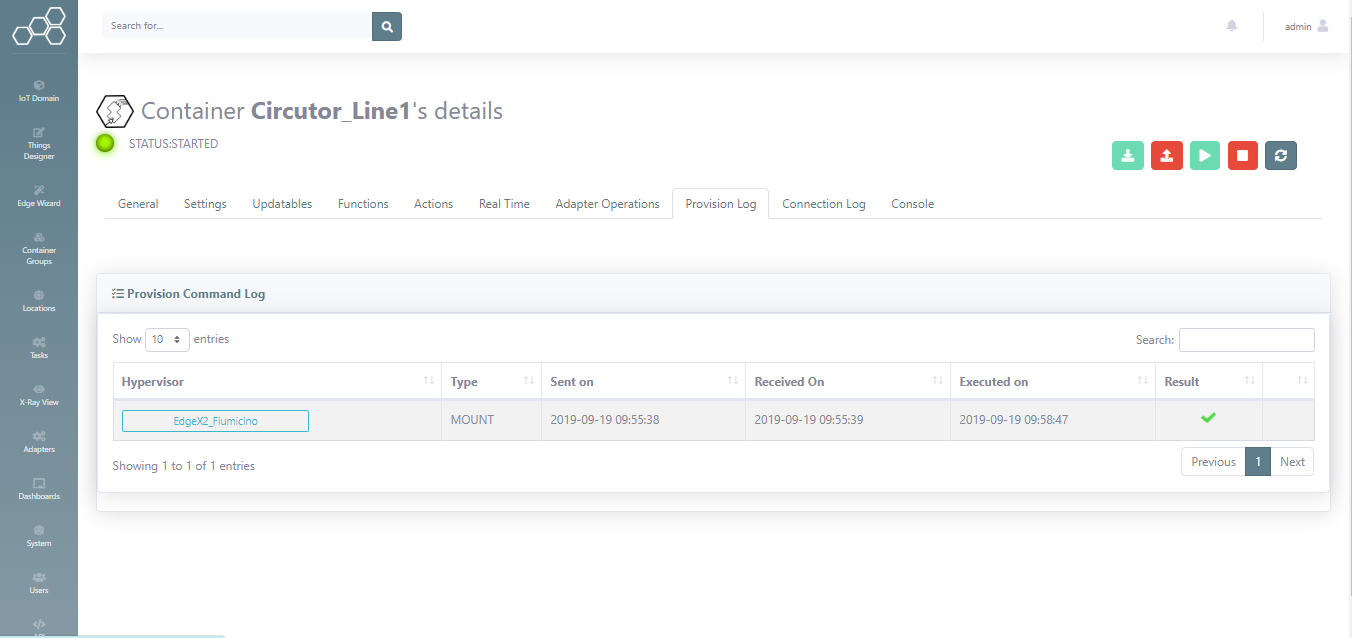
Provisioning History View
Every mount and unmount operation is logged (actually all the IoT DevOps are logged). You can check all the committed / failed operations to always have your complete IoT Domain under your control.
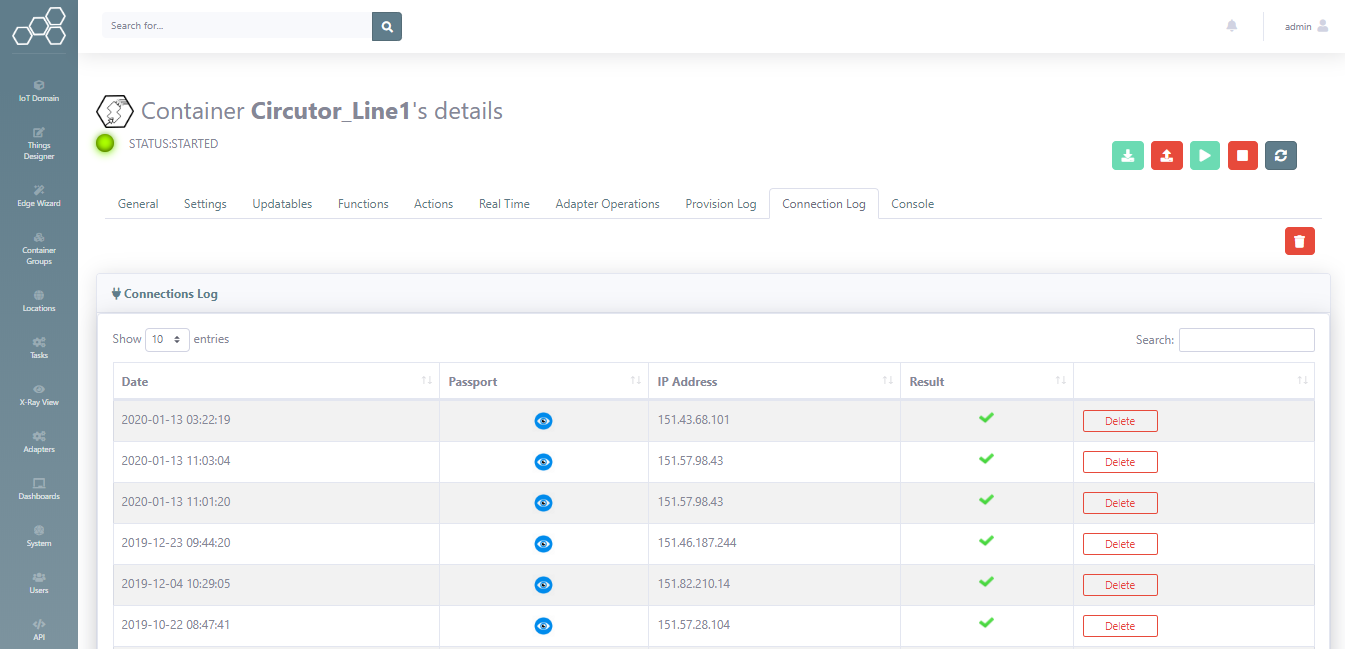
Connections Report
Everytime an IoT Catalyst Container starts, it performs an handshake operation in order to be granted to access the IoT Catalyst Domain. Each connection is logged. It is the starting point for detecting anomalies or problems.
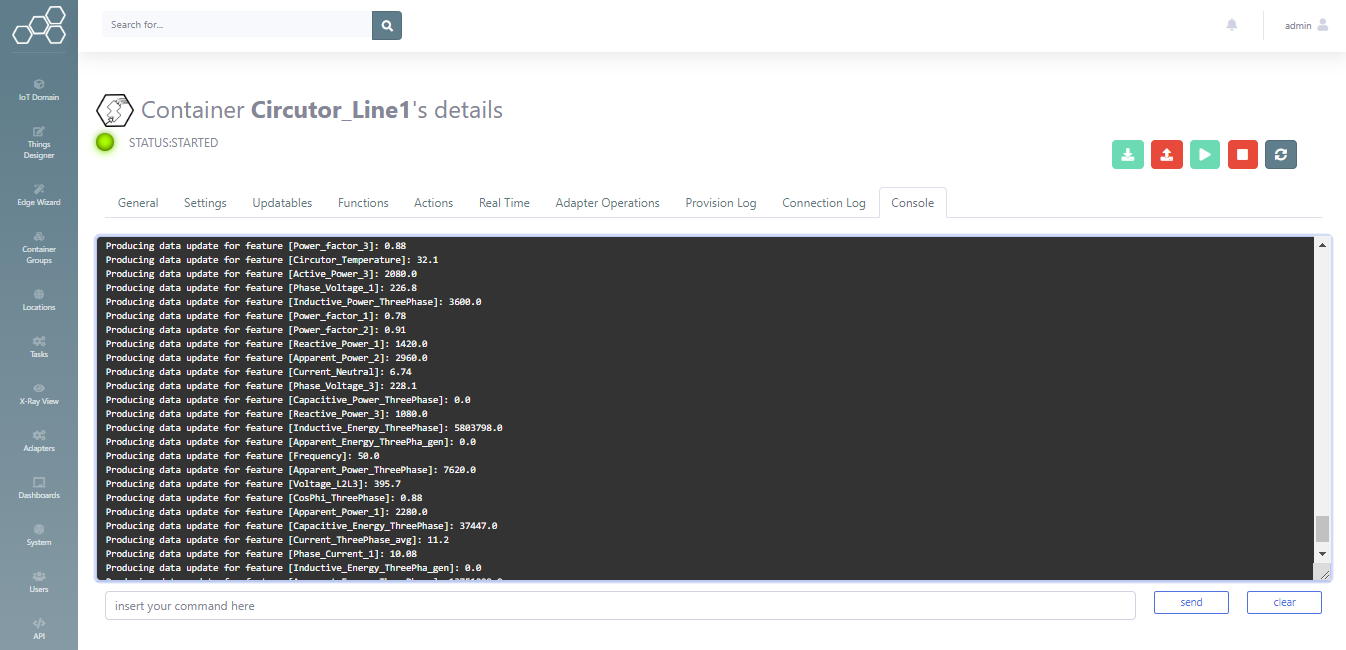
Remote Consoles
Each IoT Catalyst Container is provided with a bidirectional real time command shell. That means that you will be able to access to the STDIN and STDOUT of the IoT Catalyst Container process even deep in the hosting network. For istance, it is possible to create an IoT catalyst Digital Thing that prompts the user to insert some data in order to produce datapoints, events or even action... Or you can see the debugging printouts while developing your IoT drivers. Do you have ever seen something similar in other IoT Edge Computing technologies?
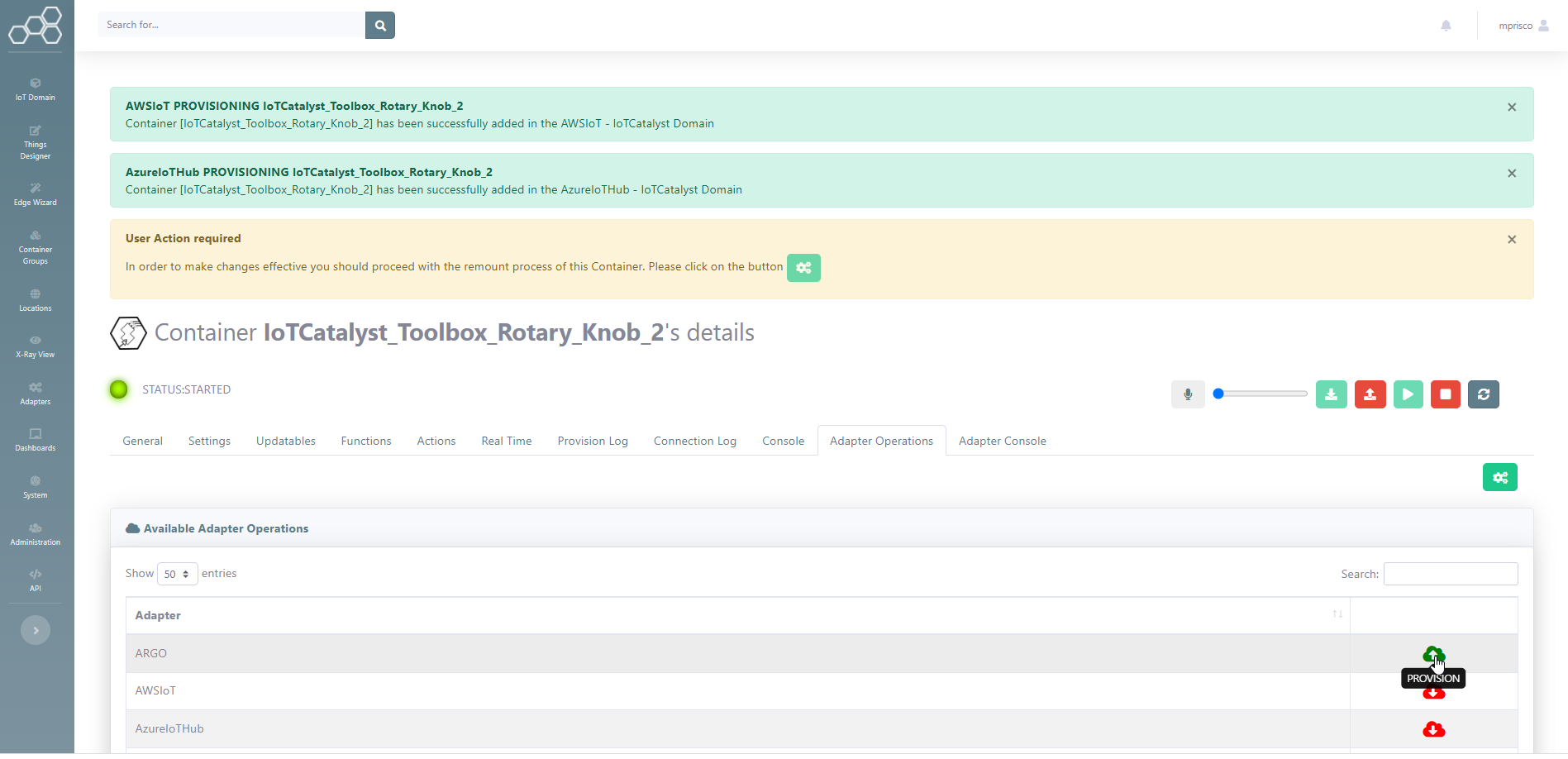
Adapters Operations
From this control panel you can view the provisioning status with respect to the different external platforms for which a specific IoT Catalyst Adapter has been loaded. It is always possible to connect or disconnect a Container, even if it is running, to an external platform. Simply click on the appropriate icon and IoT Catalyst will take care of the rest.
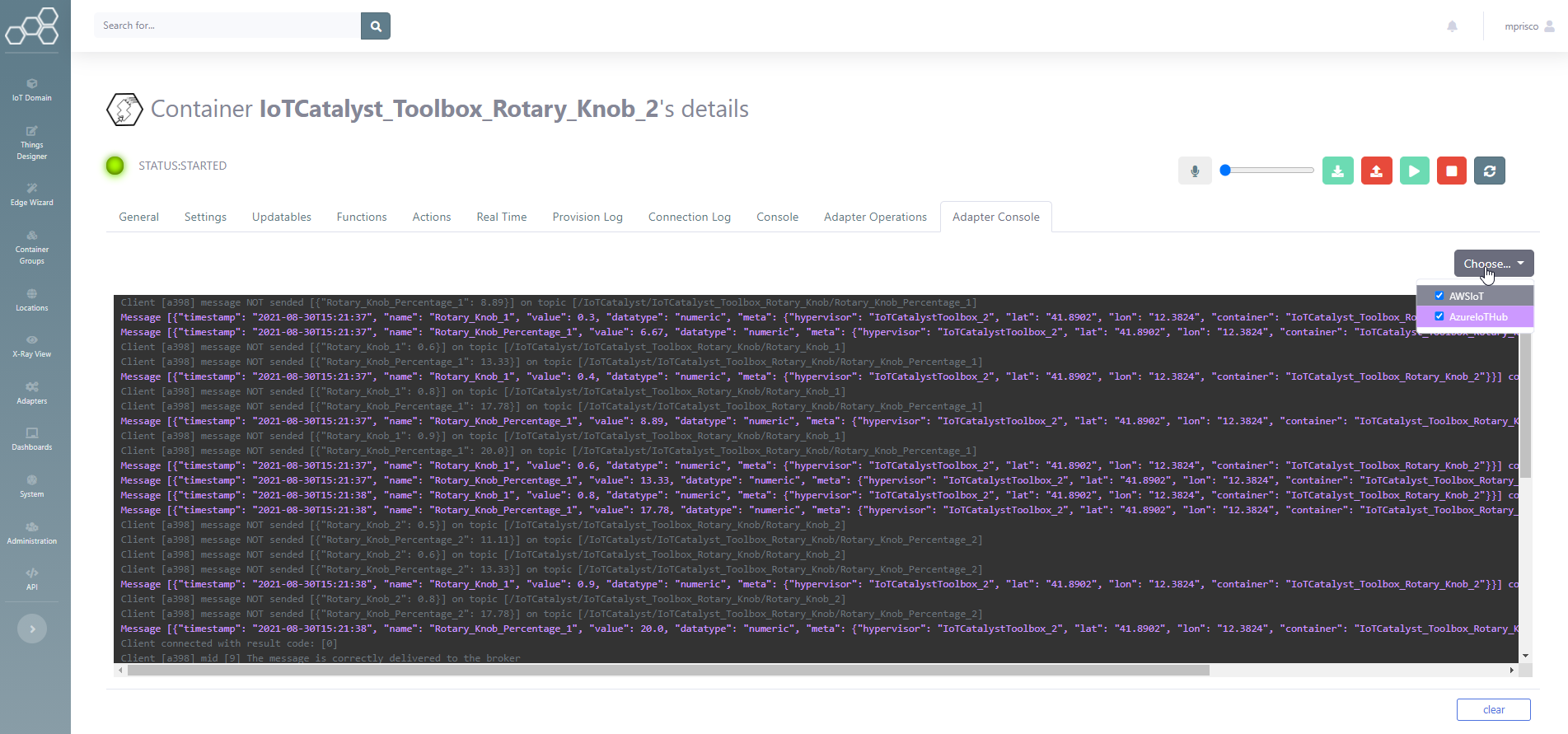
Adapters Console
Each IoT Catalyst entity is a fully managed and independent component. This also applies to Adapters. To facilitate troubleshooting procedures, or to simplify the development process of a custom Adapter, the consoles of each individual running adapter are remoted to be accessible by the user at this time and from anywhere. No more hunting for remote log files. It's all just a click away.

